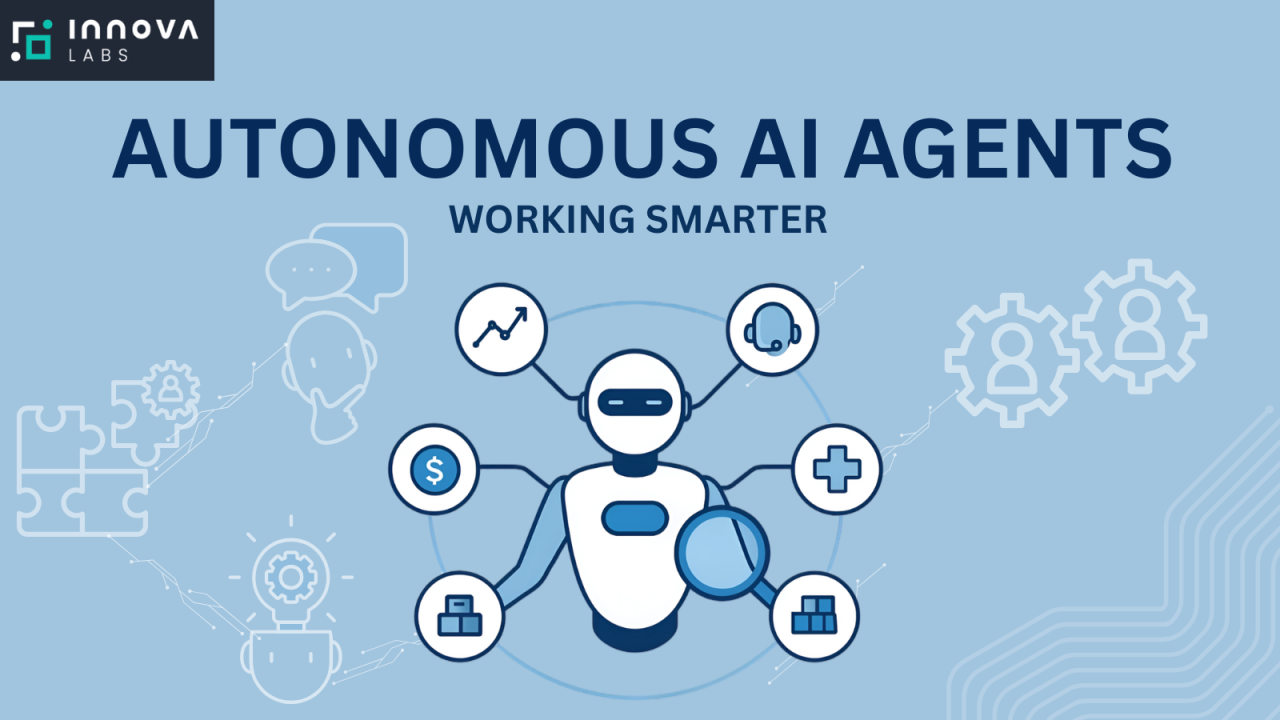MiniMax Releases MiniMax M2 — a fast, cheap, agent-ready open model
MiniMax, the Shanghai-based AI startup, has just launched MiniMax M2 — a new flagship large language model that aims to upend the tradeoffs between capability, cost, and speed. Announced and open-sourced in late October 2025, M2 is being billed as a model “built for agents and code”: a Mixture-of-Experts (MoE)-style architecture with a very large total parameter count but a deliberately small activated parameter footprint during inference. The result, MiniMax claims, is near-frontier performance for multi-step tool use and coding tasks while keeping inference latency and cost low enough for practical, production-scale agent deployments. minimax.io+1
This article unpacks what M2 is, the technical choices behind it, how it performs compared with other open and closed models, why MiniMax thinks it will matter for agents and developer workflows, and the broader commercial and ethical implications of rolling out a powerful open model today.
Why M2 matters: the problem it’s trying to solve
Large models have delivered dramatic improvements in reasoning, tool use, and code generation — but they’re expensive to run and hard to scale for real-world multi-step agents that need low latency, long context, and cheap repeated calls. Cloud costs, throughput limits, and integration complexity make many advanced models impractical for agents that must call tools, manage state, or orchestrate workflows over long horizons.
MiniMax M2 is explicitly positioned to address that gap: provide agentic capabilities comparable to leading closed models, while reducing inference cost and increasing throughput. MiniMax markets M2 as an open-source, production-grade alternative that makes sophisticated agents (and code-centric workflows) affordable for startups and large teams alike. That positioning — agent focus + cost efficiency + open access — is central to how MiniMax is pitching the model to developers, enterprises, and the broader research community. minimax.io+1
What M2 is (architecture & key specs)
At a high level, MiniMax M2 uses a Mixture-of-Experts (MoE) design where the model’s total parameter count is large (reported as ~230 billion parameters), but only a subset of experts — roughly 10 billion activated parameters — are used per token during inference. This “sparse activation” approach is designed to deliver the representational power of a very large model while keeping the compute cost per token much closer to a smaller dense model. The public repository and the company’s technical write-ups emphasize this 230B/10B split as a deliberate engineering tradeoff to improve efficiency in agentic and code tasks. GitHub+1
Other headline specs and product notes from the release and early coverage:
-
Open-sourced: The company announced M2 as open source (code / model weights and checkpoints made available through official channels), explicitly to encourage adoption and ecosystem development. minimax.io
-
Agent & coding focus: MiniMax emphasizes tool calling, multi-hop reasoning, and end-to-end developer workflows (code generation, debugging, and test cycles) as primary use cases. minimax.io+1
-
Context capacity & speed: Early benchmarks reported by third parties show large context windows (100k+ tokens in some tests) and higher tokens-per-second throughput compared to prior MiniMax models — claims that are consistent with the MoE design’s goal of higher efficiency for long contexts. Exact capacity depends on deployment configuration and hardware. Skywork+1
Performance: benchmarks, comparisons, and early reception
Independent and industry coverage since the release places M2 as one of the most capable open models for agentic tasks. Several outlets reported M2 outperforming other open models on multi-tool benchmarks and scoring highly on aggregate intelligence indices that mix reasoning, coding, and knowledge tests. At the same time, some headlines framed M2 as a challenger to paid frontier models — claiming “near-GPT-5” or “outperforming Claude on certain indices” — which should be interpreted cautiously until peer-reviewed, reproducible benchmarks are widely published. Venturebeat+1
Notable early findings from media and technical reviewers:
-
Agentic/tool performance: M2 has been singled out for superior tool-calling behavior and multi-step planning in synthetic agent benchmarks, arguably because MoE architectures can specialize experts for procedural and tool-oriented sub-tasks. Venturebeat
-
Coding: Several early reviews and blogs report excellent code generation and debugging ability, with lower latency and cost per token than many closed alternatives — making it attractive for developer automation pipelines. Analytics Vidhya+1
-
Cost/performance ratio: MiniMax and third-party analyses emphasize that M2 is dramatically cheaper to run (MiniMax’s marketing claimed a fraction of the cost of some competitor offerings), enabling sustained agent workloads that would be financially impractical on pricier models. minimax.io+1
Caveat: early reviews are often based on preprints, vendor benchmarks, or short evaluation runs. Robust independent evaluations (across many tasks and adversarial prompts) will take time, and the landscape of model evaluation changes quickly.
Economics: pricing and deployment
One of M2’s most attention-grabbing claims is its cost efficiency. MiniMax public materials and multiple news reports described pricing that undercuts several leading paid models by a wide margin: the company and ecosystem partners suggest that per-token costs can be a small fraction of what competitors charge. The company also highlighted runtimes and throughput advantages (e.g., “twice the speed” compared with some alternatives in their internal comparisons). These economics matter for any team running continuous agent workloads, where small per-call savings compound quickly. minimax.io+1
Because M2 is open source, organizations have several deployment options:
-
Run self-hosted on suitable GPU clusters or inference platforms that support MoE routing (which can be more complex than dense model hosting).
-
Use MiniMax’s hosted API or third-party inference providers that offer turnkey deployments, optimized for throughput and long context windows.
-
Integrate via open inference adapters (community tooling that makes it easier to switch models in developer pipelines).
The open-source route reduces vendor lock-in and increases control, but teams must weigh the operational complexity of MoE inference (expert routing, memory usage, and sharding strategies) against cost savings.
Why agents and code-first models are a strategic bet
MiniMax’s emphasis on agents and coding workflows reflects where practical LLM value is currently concentrated. Agents — software systems that plan, call tools (APIs, shells, databases), and manage state — require predictable latency, reliability, and the ability to reason over long contexts. Similarly, modern developer productivity stacks use code generation, refactoring, and CI/CD automation where throughput and iteration speed directly impact productivity.
MiniMax appears to have optimized M2 around those workloads: specialized experts for code and tool use, efficiency in long contexts, and open availability for developer experimentation. For enterprises and startups building agentic products (customer support automation, autonomous data pipelines, CI-driven code assistants, etc.), a cheaper, fast, open model that performs well on these tasks is very attractive. minimax.io+1
Use cases: practical applications for M2
Here are concrete places M2 is likely to be adopted early:
-
Agent orchestration platforms — Runtimes that manage sub-agents (planner, retriever, tool caller) will use M2 as the decision-making backbone because of its low cost and multi-step prowess.
-
Code generation and dev tools — IDE assistants, automated code review, and CI hooks that generate patches or tests can run at higher volume with M2’s lower per-call costs.
-
Enterprise automation — Automated workflows that need repeated LLM calls (data extraction, summarization of long logs, cross-system orchestration) benefit from M2’s long context and throughput.
-
Research and fine-tuning — Open access lowers the barrier for labs and startups to fine-tune and adapt M2 to domain-specific tasks (medical, legal, finance) — with the usual caveats about data quality and safety. GitHub+1
Risks, limitations, and the regulatory/legal context
Powerful open models raise both technical and societal risks, and MiniMax is not operating in a vacuum. A few important considerations:
-
Copyright and IP litigation: MiniMax has been in the headlines this year amid legal scrutiny from major content owners over training data and output fidelity. Prior to M2’s release, the company faced lawsuits alleging large-scale copyright infringement — a reminder that open models can amplify legal exposure for both builders and downstream integrators. Organizations deploying M2 should be vigilant about usage policies, prompt engineering to avoid verbatim copyrighted outputs, and legal compliance for commercial products. Axios
-
Safety & misuse: Open models can be repurposed for harmful tasks (disinformation, malware generation, fraud automation). MiniMax and the community will need to invest in robust safety guardrails, red-teaming results, and usage controls. Open-source availability increases the attack surface but also enables the community to audit and patch risks more quickly. Analytics India Magazine
-
Operational complexity: MoE models are efficient at scale but technically more complex to host than dense models—requiring careful engineering around routing, memory, and hardware topology. Smaller teams may prefer hosted APIs until tooling matures. GitHub
Market impact: competition and the open frontier
M2’s release adds momentum to the “open yet powerful” segment of the model market. Several dynamics to watch:
-
Open models closing the gap: With M2, the open-source community now has a contender that claims agentic performance competitive with closed offerings — which could accelerate adoption of open stacks across startups and enterprises. Venturebeat
-
Pricing pressure on closed APIs: If M2’s cost claims hold up in production (and if third-party hosting becomes widespread), paid API providers may face downward pressure on token pricing or need to emphasize differentiated features beyond raw model capability. iweaver.ai
-
Ecosystem growth: Open models encourage a richer ecosystem — adapters, toolkits, and specialized fine-tunes — that, over time, can outpace the feature velocity of proprietary models simply through community contributions.
What developers and product teams should consider right now
If you’re evaluating M2 for production, here’s a pragmatic checklist:
-
Define the workload: Is your workload agentic (multi-step tool calls, long context) or simple retrieval/generation? M2 is optimized for the former. minimax.io
-
Plan for hosting: Decide between self-hosting (needs MoE-capable infra) and managed hosting. Estimate total cost of ownership including engineering time. GitHub
-
Safety & legal review: Run an IP/safety audit. If your product will be customer-facing, invest in filters, red-team testing, and legal counsel. Axios
-
Start small, measure ROI: Pilot M2 for a microservice that calls the model frequently (e.g., code review automation) to validate cost/performance before broad rollout. Skywork
The broader picture: models, openness, and the future of agents
MiniMax M2 is more than a single product; it signals a broader movement: increasingly capable models are becoming accessible rather than exclusive. That democratization accelerates innovation but also concentrates responsibility — for how models are trained, deployed, and governed.
If M2 genuinely delivers agent-grade reasoning at low cost, we’ll likely see an explosion of practical agent applications over the next 12–24 months: automated cloud ops agents, autonomous test generation and repair, complex customer support chains, and new classes of developer automation. At the same time, the legal and safety conversations will intensify, and platform providers, regulators, and corporations will be forced to develop pragmatic controls for provenance, attribution, and lawful use of generated content. Analytics India Magazine+1
Conclusion — a practical disruptor with responsibilities
MiniMax M2 is a bold release: an open, MoE-based model that prioritizes agentic capability, coding proficiency, throughput, and cost efficiency. Early coverage and vendor benchmarks suggest it can genuinely change the economics of running agents and developer-facing LLM services. However, like any powerful open model, M2 brings operational complexity and legal/safety considerations that teams must confront head-on.
For engineers and product leads: M2 is worth experimenting with now if your use cases require multi-step reasoning, tool calling, or high-volume code generation. For policymakers and platform stewards: M2 is a reminder that open access to powerful models is a double-edged sword — great for innovation, but demanding strong safeguards.
MiniMax’s release is an important milestone in the open-model era. Whether M2 becomes the standard for agents will depend on reproducible benchmarks, community contributions to tooling and safety, and how the industry navigates the legal and ethical challenges that surface when powerful models become widely available. TechNode+4minimax.io+4GitHub+4
Sources and further reading
-
MiniMax official announcement: “MiniMax M2 & Agent: Ingenious in Simplicity.” minimax.io
-
MiniMax-M2 GitHub repository and technical notes. GitHub
-
VentureBeat coverage: “MiniMax-M2 is the new king of open source LLMs (especially for agentic tool calling).” Venturebeat
-
South China Morning Post: “Chinese start-up MiniMax launches record-breaking AI model.” South China Morning Post
-
TechNode: “MiniMax releases M2 open-source model, offering double speed at 8% of Claude Sonnet’s price.” TechNode
For quick updates, follow our whatsapp –https://whatsapp.com/channel/0029VbAabEC11ulGy0ZwRi3j
https://bitsofall.com/build-interactive-real-time-visualization-dashboard-bokeh-javascript/
https://bitsofall.com/build-computer-use-agent-local-ai-models/
Liquid AI’s LFM2-VL-3B Brings a 3B-Parameter Vision-Language Model (VLM) to Edge-Class Devices







